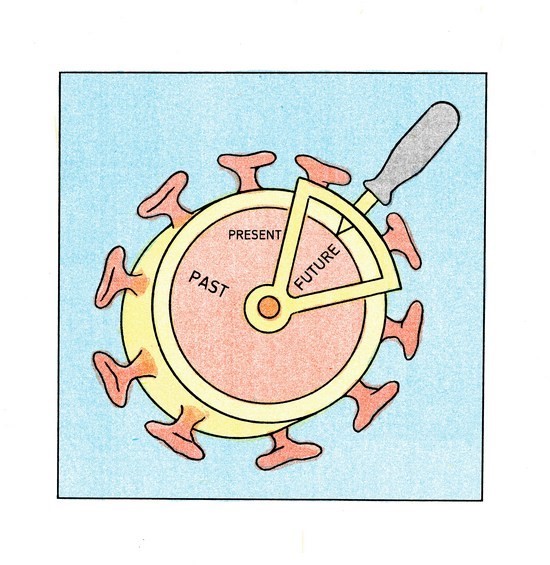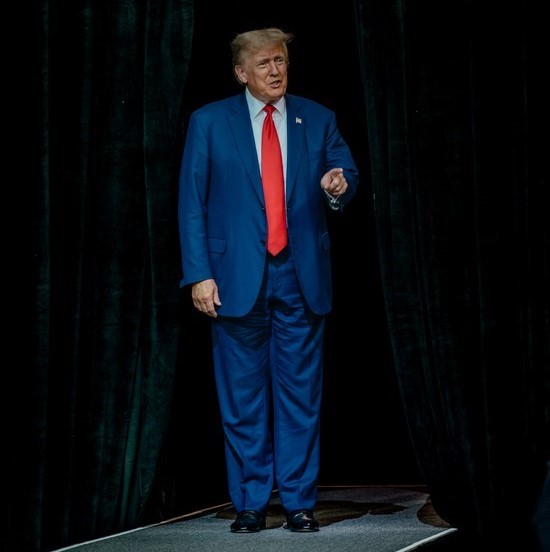My colleague David Wallace-Wells, in his New
York Times newsletter last week, described the
COVID era as a time machine —
one that unwound years or decades of progress and threw us back into the past.
The rise in mortality, the spike in violent crime, the learning loss for
children — each of these turned us back toward the conditions of an earlier
period: the higher homicide rate of the late 1990s, the higher death rates of
the turn of the millennium, the lower
National Assessment of Educational Progress test scores of the 2000s.
اضافة اعلان
As Wallace-Wells suggests, there are
different ways to read this regress. It’s grim news of some sort, no matter
what. But you can treat it as a truly dire signifier of the fragility of
progress, or else emphasize the good news — that even after a global plague
that killed millions of people, we’re still in a basically familiar landscape,
a world that looks more like the
George W. Bush era than some postapocalyptic
desolation.
I was particularly interested in his
time-machine image, though, because I, too, wrote a column about
COVID as a time machine, way back in the early days of the pandemic. But I had a different
kind of DeLorean voyage in mind: in that piece, I argued that the pandemic was
an accelerant, hurrying along social, political, and technological changes that
might have unfolded more slowly otherwise, hurling us forward toward the 2030s,
not back into the past.
Whose time-machine analysis makes more
sense? I think there’s no need to choose; synergy is possible. Both capture
something real about our post-pandemic situation, which has combined
acceleration with regress in interesting, if mostly unfortunate ways.
The regressive trends Wallace-Wells is
describing are developments that seem very specific to pandemic conditions,
disruptions and disjunctions that you probably would not have predicted even on
a slower time scale just looking at the world circa 2018.
 There was stagnation in American life
expectancy before Covid, but even in the shadow of the opioid epidemic there
was no good reason to expect such a sharp decline, Ross Douthat writes. (Alain
Pilon/The New York Times)
There was stagnation in American life
expectancy before Covid, but even in the shadow of the opioid epidemic there
was no good reason to expect such a sharp decline, Ross Douthat writes. (Alain
Pilon/The New York Times)
The sudden change in the mortality rate is
the most obvious example; there was stagnation in
American life expectancy before COVID, but even in the shadow of the opioid epidemic there was no good
reason to expect such a sharp decline. But one could say the same of murder
rates: you might expect fluctuations as a downstream effect of protests or
de-carceral policies, but before 2020, I would have bet against an aging
society with a steadily expanding surveillance apparatus returning to the
homicide rate of Bill Clinton’s second term.
I would put inflation in this category as
well. Our long era of low interest rates seemed linked to deep socioeconomic
features of the developed world, an aging population above all (since old
societies grow more slowly, and old people save more and spend less). And it
took extraordinary fiscal profligacy, spending on a scale unimaginable outside
of an emergency, to bring inflation back — along with all the supply-chain
issues that were unique to the pandemic as well.
By contrast, the aspects of the COVID era
that I discussed or tried to predict in my fast-forward column were
accelerations, not disjunctions. The decline of churchgoing, for instance, was
a feature of 2010s America before the pandemic closings detached a larger
number of people from their places of worship; that detachment was the same
trend, just experienced more rapidly. The growth of working-from-home and virtual
commuting, similarly, was a leap upward that followed a “continuous rise” in
the
pre-COVID decades. The leftward lurch among elite institutions in the
George Floyd era, the purges and defenestration's and ideological ferment, was
likewise a case of an existing trend — the “Great Awokening” that began
somewhere in Barack Obama’s second term — going into pandemic overdrive. And
the baby bust of 2020 was, of course, an acceleration of a fertility decline
that began with the Great Recession more than a decade before.
Some trends didn’t shake out exactly as I
anticipated three years ago: the decline of newspapers, for instance, continued
on trend but didn’t actually accelerate. In other cases the acceleration went
so hard and fast that there was a snapback, sometimes mild (the modest
fertility rebound in 2021) and sometimes more striking: just as wokeness went
further than it would have absent the pandemic, so too has anti-wokeness
enjoyed more political and cultural success than it might have if the leftward
movement in the elite had ground onward at a slower pace.
Then in still other cases the acceleration
overshot the fundamentals and created a crisis, or at least a mess. That’s
basically the story in Hollywood, where the shift to streaming was bigger and
faster than it would have been without
COVID pinning everyone to their couch or
screen, but ultimately so big and fast that it created an unsustainable new
status quo, which neither the studios nor the striking screenwriters and actors
appear to know how to stabilize or unwind.
“It will be the same, just a bit worse,”
Michel Houellebecq predicted mordantly about the world after the pandemic. So
far, the interaction between the fast-forwarding I saw happening and the
falling-backward trends that Wallace-Wells describes mostly falls into the
“worse” category. It basically lays on extra burdens: We’re going to be dealing
with various mid-21st-century problems somewhat sooner
because of COVID, and
yet we’re also stuck dealing with problems we thought we’d left behind in 1999
or even 1982.
 Former president Donald Trump holds a campaign
event in Rapid City, S.D., on Sept. 8, 2023. (Jamie Kelter Davis/The New York
Times)
Former president Donald Trump holds a campaign
event in Rapid City, S.D., on Sept. 8, 2023. (Jamie Kelter Davis/The New York
Times)
Before 2020 you could look ahead to the
2030s and say, Well, growth will be slow because of the baby bust and
population aging, but at least we’ll be able to carry big deficits and enjoy
safer cities as we slide into twilight. But now we look ahead and say instead,
Well, the baby bust has worsened, threatening a more senescent and stagnant
future, but now we’ve also got the crime problems and inflation problems of a
much younger society. Thanks to COVID’s forward-lurching time machine, some
aspects of our decadence have deepened; thanks to the backward lurch, it’s also
become less cushioned, more uncomfortable, and chaotic and dangerous.
For countervailing optimism, the main place
to look is technology.
Whether COVID played a big causal role or not, there
does seem to have been a technological acceleration in the past five years, a
break from the relative stagnation (or digital-only innovation) of the prior
decades. How far any of this will take us is unclear: The AI-driven economic
boom remains as hypothetical as the Skynet apocalypse, and as Benjamin Breen
notes in an essay on Substack, the true nature of scientific revolutions is
often clear only in hindsight, and the correlation between tech breakthroughs
and societal improvement is always complicated and contingent.
But if we’re being hopeful, the hope should
be that any potential technology-driven boom could help reverse the kind of 1990s-meets-the-2030s
dynamic we have right now — bringing back the best of the ’90s, not the violent
crime rates but the rising productivity, social optimism, and more robust
marriage rates and birthrates (perhaps mediated by the rise of work-from-home),
but all set in a more futuristic landscape of cheap, abundant energy and rapid
biomedical advances.
A form of time travel, a collision of eras,
a fondly remembered past and a desired future converging in our timeline — all
that sounds pretty good to me. Just not this collision, this combination, this
early arrival of a disappointing future darkened further by the return of the
problems of the past.
This article originally appeared in The
New York Times.
Read more Opinion and Analysis
Jordan News







